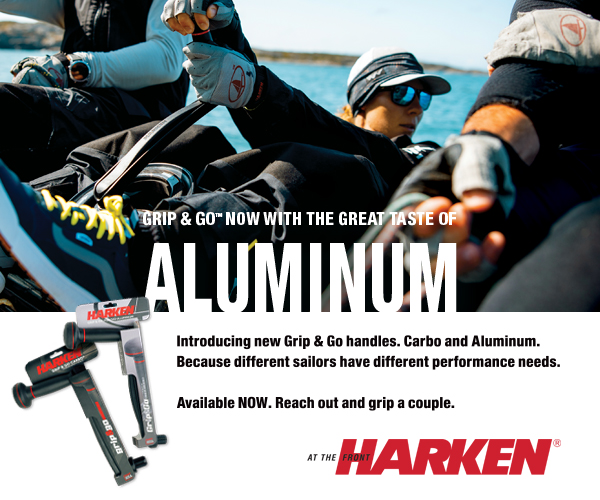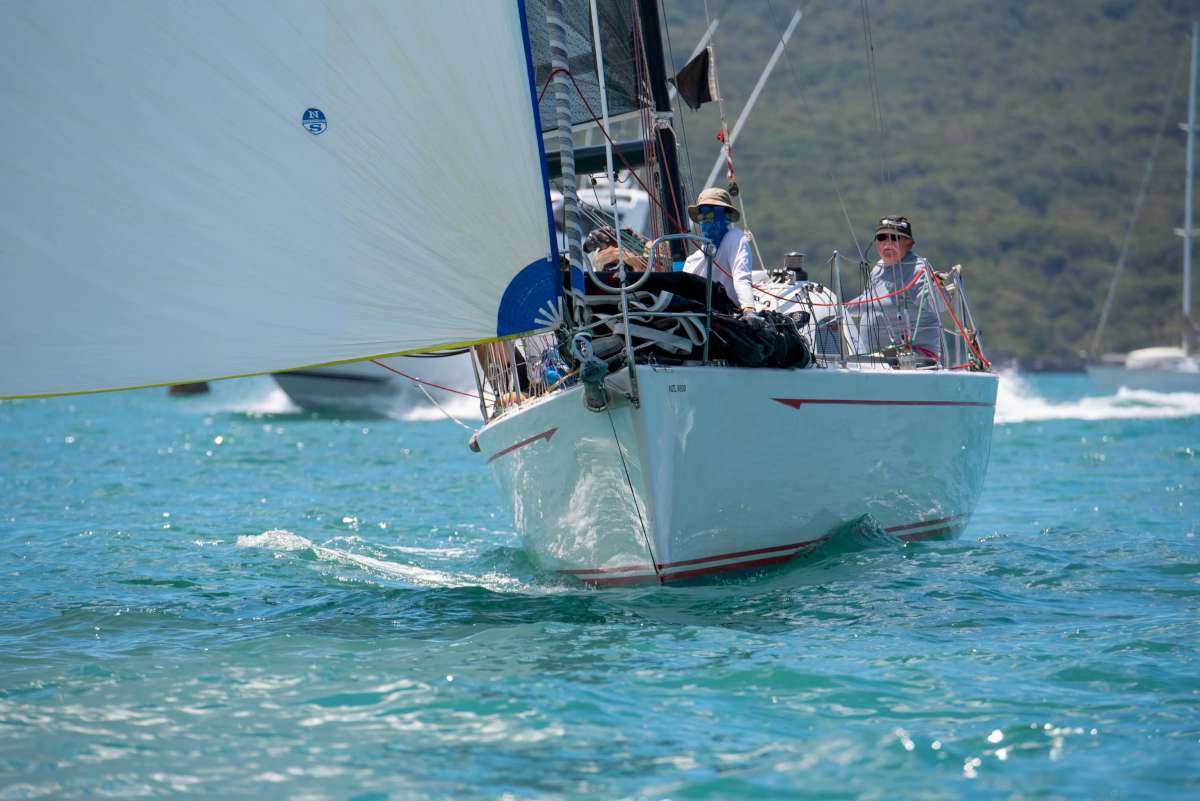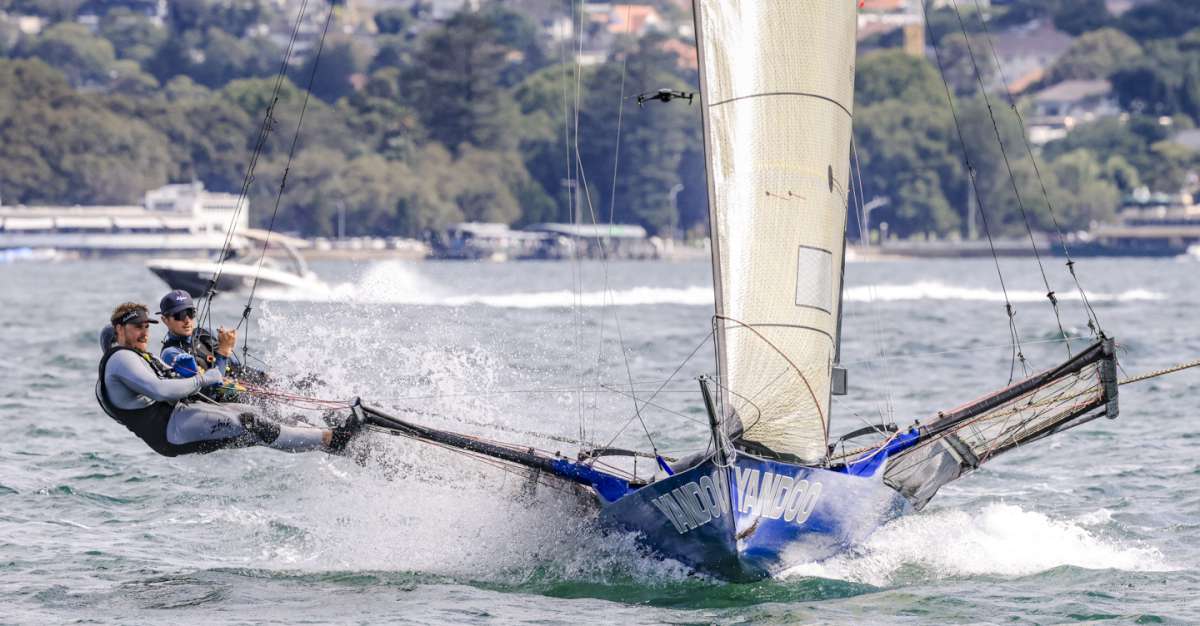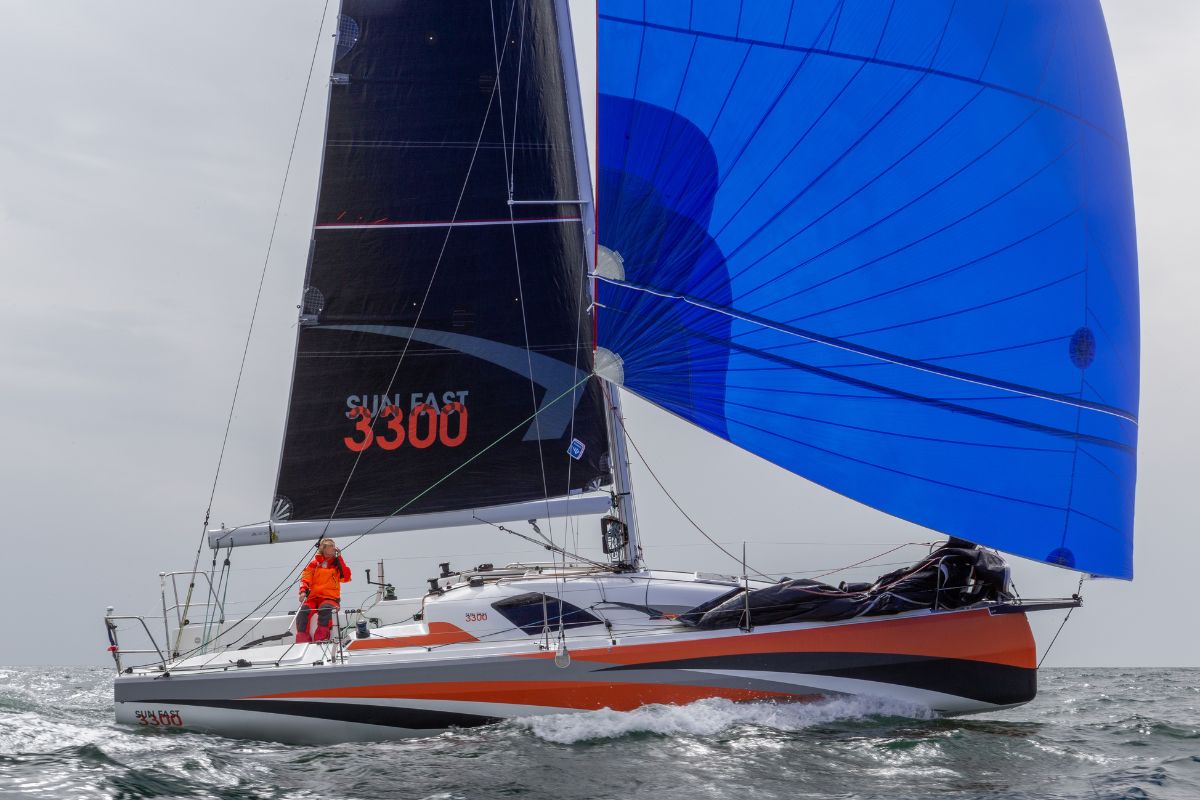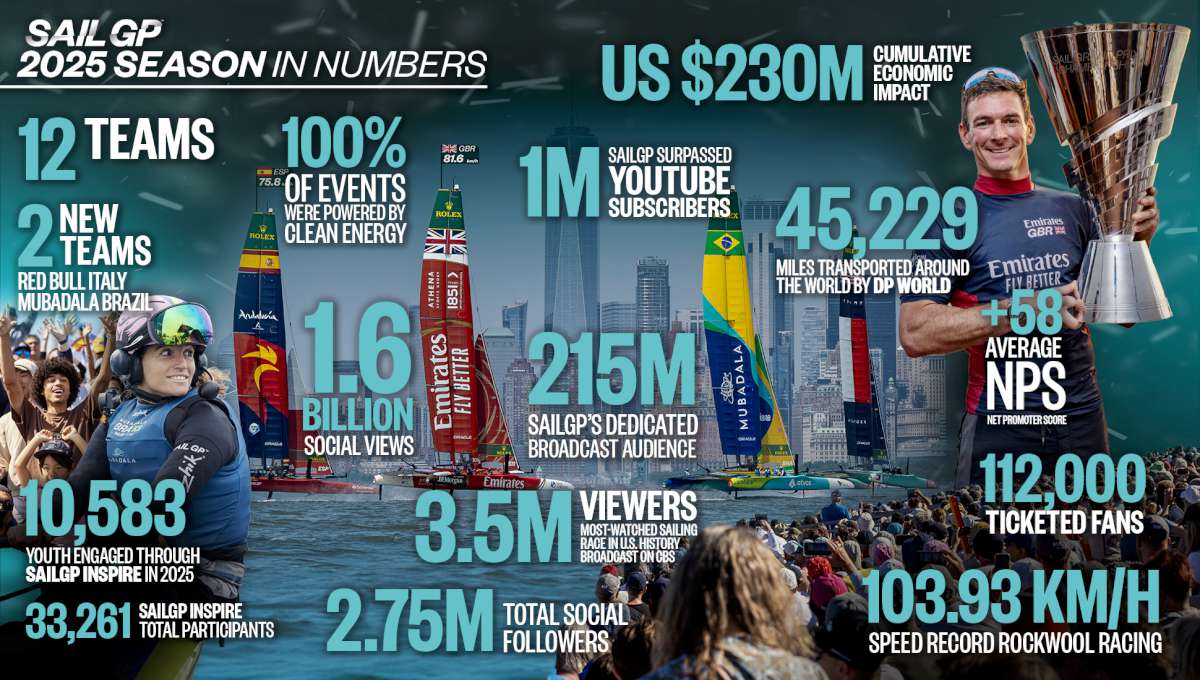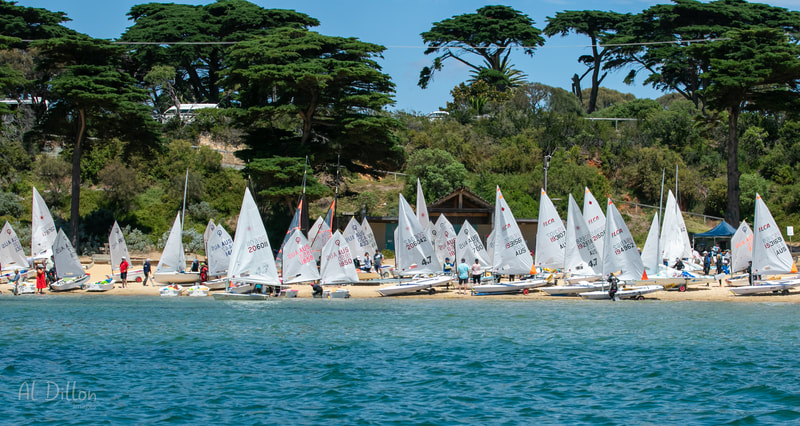For thousands of years, man has heeded the call of the sea: whether for trade or piracy, for exploration and adventure, or to seek to understand more of his environment. Until the advent of aircraft, ships were the links that bound country to country, continent to continent and people to people. They were, in one, a means of trade, of spreading civilisation and of making war.
In ancient times, apart from the rowed galleys of war, ships were lumbering square-rigged affairs that could only sail with the wind abaft the beam. In the Mediterranean it is oft still said that, to get from A to B, a yacht must either have a strong storm jib or a good engine.
It was in the eastern Mediterranean, probably in the second century A.D., that the first fore-and-aft rigged vessels, the first ships carrying triangular lateen sails capable of effectively sailing to windward, ventured out in numbers to criss-cross the so-called ‘sea of seas’. Those first ships were probably built to either Persian or Egyptian designs, a design which has remained even to this day.
It was the Arabs who realised and took advantage of the great potential of the lateen rig for sea-going vessels. They used it on their ships that sailed the Red Sea and cruised the Indian Ocean off the east coast of Africa, as far south as Zanzibar. We can thank the Arabs, too, for the spread and use of the rig throughout the entire Mediterranean basin, thence to northern Europe.
The original lateen sails must have been adapted from the old square sails used by the Egyptians, Persians, Phoenicians and Greeks. Someone somewhere, perhaps on the Nile, found a way of altering the old square-sails and rigging them to enable his vessel to tack into the wind.
The lateen sails seem first to have been used on European medieval ships as mizzen sails, during and after the Crusades. Presumably, the crusading sailors had seen them used by the Arabs and liked what they saw.
The Arab cargo vessels carried one or two huge sails bent to a yard resembling a gigantic fishing-rod. Its butt, when the sail was set, came nearly down to the deck while the tapering end of the peak soared many feet above the masthead.
All hands were needed to hoist the sails and the operation could take a long time. The big drawback was that there were only two means of reefing those sails; either by the sailors going aloft up the scanty rigging, while clinging to the gyrating yard and bundling the sails as best they could: a ‘bundling furl’; or by lowering the yard and sail together to the deck.
Euro innovation
While European sailors understood and disliked the problems inherent in reefing lateen sails, they found that they could use a cut-down version of them, set them as mizzen sails and so have their ships sail at least a point closer to the breeze. Another point in their favour was that, as mizzen sails positioned in the stern of their ships, they made steering much easier. Soon, the lateen mizzen sail was common on most sea-going craft and it only gave way to a gaff mizzen around the end of the 18th century.
Before the end of the 16th century, however, the Dutch had begun to rival the Spanish and English supremacy of the seas and, apart from mounting the first Arctic expedition and introducing ‘yachting’ as a sport and taking that sport with them to the New World when they settled in New York, they experimented with a new rig for small vessels based on the old lateen sails. It was the Dutch who developed the European version of the fore-and-aft rig.
At this time the Dutch were the greatest European sailing innovators and, more than any other nation, they had taken shipbuilding and naval architecture much nearer to an art than a science. The lengths and complexity of Dutch inland waterways and the shallowness of the coasts and channels, must have encouraged them to study the problem of handling small shipping in confined waters. What the Tigris, Euphrates and Nile had been to the ancients, the inland waterways were to the Dutch.
The square-sail rig was far too clumsy for tacking in an out of the small harbours of the Zuyder Zee and the North Sea, the square-sail would not sail close enough to the wind to allow small craft to lay a course in a straight and narrow channel. While the Mediterranean lateen rig with its enormous yard was not suitable for the squally North Sea, the Dutch appreciated the windward qualities of the lateen shape. So they set about preserving its triangular form while cutting the sail itself in two for convenience and handling realising, at the same time, that they were were forced to sacrifice speed for handiness.
If we cut off that part of the lateen sail forward of the mast we are left with a rectangular figure, the germ of the first mainsail of the cutter or sloop-rigged boat. In practice, the 16th century Dutch sailmakers and boatbuilders made the sail much squarer at the top and stretched a sprit diagonally across the sail, with the peak on nearly the same level as the throat. This sprit was supported in the same way as the Thames barges still seen sailing the east coast waters of England today: by a yard tackle running down from the throat to the sprit.
The staysail, worked on the forestay, was the rough equivalent of that part of the triangle cut from the forward section of the lateen sail. It was a vessel rigged like this, seen in contemporary engravings, which brought home in 1599 the members of the ill-fated Dutch expedition to the North Pole.
The last relic of the lateen yard disappeared when the sprit was replaced by a small gaff at the top and a boom at the bottom of the loose-footed sail. Then came long booms in order to be able to set a jib forward of the staysail.
Topsails were added as on contemporary full-rigged ships, square-shaped, set athwart the ship and not parallel to it. Dutchmen also used a large squaresail for running, similar to the lower course of the sails of a full-rigged ship.
As an aside, since the 16th century there have been a number of successful versions of the fore-and-aft rig for small craft, probably the most popular has been the lugsail: a quadrilateral sail with its head secured to a yard slung on the mast with the sail projecting just forward of the mast; and the Gunter, where the sail is also attached to a yard, but in this case the yard slides vertically on the mast.
England rules the waves
During the 17th century the future King Charles II of England lived in exile in Holland, from an early age he was fascinated by the sea and ships. He became interested in ‘yachting’ and, according to an account of one of his cruises written by Adrian Vlackett in 1660: ‘found his yacht so convenient and comfortable that he remarked while discoursing with the Deputies, that he might order one of the same style as soon as he should arrive in England, to use on the river Thames.’
Crafty old Charles had known what he was about by dropping that hint and, in that same year just after he had been crowned, the Dutch presented him with a yacht named Mary. Mary had carried Charles across from Holland to England after his proclamation; she was rigged with a sprit mainsail and staysail, carried leeboards and had her sides pierced with circular gun-ports.
Mary was the first ‘yacht’ ever owned in England: ‘from whence’, wrote Sir Anthony Deane to Samuel Pepys, ‘came the improvement of our present yachts, for until that time we had not heard of such a name in England.’ The word ‘yacht’ derives from the Dutch ‘yaght’ or ’yaghte,’ which, in the 16th century meant ‘a swift, light built vessel of war.’ King Charles’ Mary, at a hundred tons, 53 feet long and 19 feet in the beam, carried 8 guns and a crew of 30. She was the first ’yacht’ to appear in the British Navy list and lost near Holyhead in 1675.
In 1661, taking Mary as a model, Christopher Pett had already built the yacht Anne. In that same year the Dutch gave Charles another yacht: the 35 ton Bezan. Charles was so keen about yachting that he ordered a number of yachts built for himself, his family, and members of the Royal Court; some of these passed into general use by the Admiralty. Both Charles and James II placed their personal yachts at the disposal of the Admiralty in times of war.
The Dutch had been holding ‘yacht’ regattas and sham fights with yachts for some time, but Englishmen, now following their king’s lead, caught the mania and began using ‘yachts’ for sport and pleasure. King Charles himself sailed in a match from Greenwich to Gravesend and back.
In the 18th century, yachting began to be a fashionable sport for noblemen and wealthy gentlemen. In the reign of George I, the first yacht club in the world was founded in the harbour at Cork in Ireland. By the end of the century, the Solent, the stretch of water between the Isle of Wight and mainland England, had become the favourite cruising waters for a large number of yachts. In 1812 a yacht club was started at the Medina Hotel in east Cowes on the isle of Wight. George III owned RoyalSovereign and was a patron of the club. His son, the Prince Regent later George IV, joined the club in 1817 and cruised between the Solent and Brighton on the RoyalGeorge.
New World order
After the Crimean War, yachting really took off and in 1851, on the other side of the Atlantic, the schooner America was launched. Her rig, with her one headsail laced to a boom her foresail with a gaff but no boom and her mainsail with gaff and boom, America’s design was revolutionary.
Because of it, her canvas set flatter than the old loose-footed sails, she could hold better wind. She sailed across the Atlantic and wiped the slate with the other competitors by winning the special cup offered by the Royal Yacht Squadron for the winner of the race around the Isle of Wight. America made such an impression that the British immediately took to altering and redesigning their own craft to the same rig as the ‘Yankee’.
In the ‘Big Class’ and ‘J Class’ yachts of the late 19th century and early 20th centuries, the gaff fore-and-aft rig, developed from the ancient designs of the Middle East, reached what is often considered to be the peak of sailing beauty. Great yachts such as Britannia, the Shamrocks, Valkyries,Meteor,WhiteHeather, and Columbia for instance, were the epitome of each class and design. But the rig was soon superseded by the Marconi or Bermudan rig: the triangular mainsail that holds supremacy today.
King Edward VII had Britannia rerigged as Bermudan, immediately improving her handling and performance to windward. The Bermudan sail, especially when used with a genoa, is wonderfully efficient and easy to handle, and, in my opinion, gives a performance more akin to a lateen sail than any other fore-and-aft rig.
The fastest and most efficient of our modern yachts, with smaller mains and more emphasis on the lift and efficiency of headsails when sailing to windward, are the last word in computer-generated design. It is the lift of the wind passing to leeward of the sail, combined with the length, curvature and angle of presentation to the true wind, which does the job so well.
But, no matter how fast or efficiently our modern yachts perform, they still demonstrate the descent from the craft of the ancient civilisations of the eastern Mediterranean. To see the connection, you need look no further than the triangular aerofoil of those old sail plans.
Postscript
Some years ago, while sailing in the eastern Mediterranean, my old gaff-rigged cutter Laranda, was left standing by a handy lateen-rigged craft of roughly her size and displacement. The ‘lateener’ pointed higher and sailed much faster than Laranda and I was not too happy about it at the time.
Later I had the opportunity to sail lateen-rigged craft in the Red Sea and was again impressed by the manoeuvrability and performance to windward; but getting that huge spar up and down and reefing the sail, proved to be heavy and difficult work. Laranda’s gaff rig was definitely easier to handle. ≈
– Rob Weatherburn

